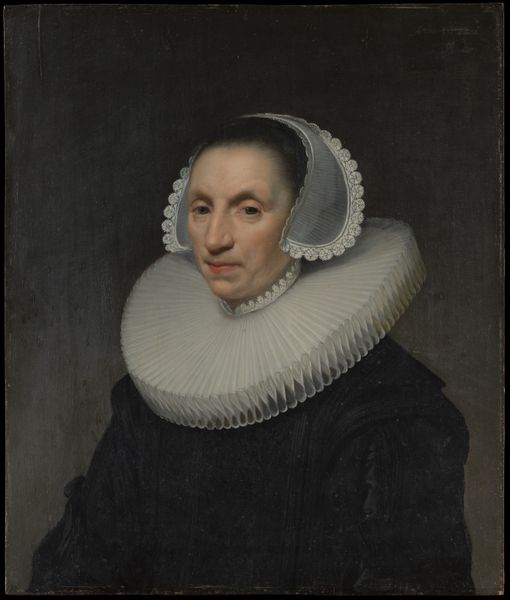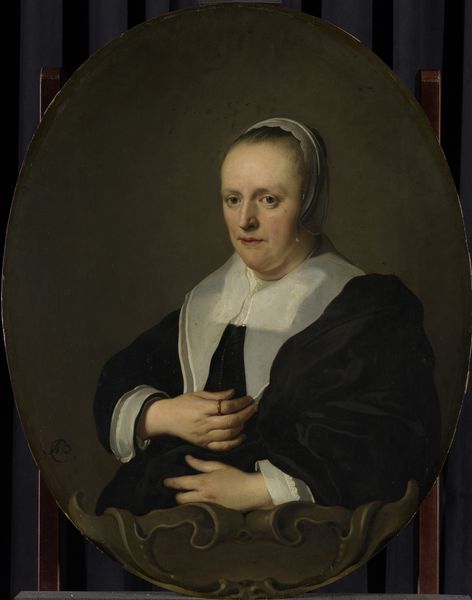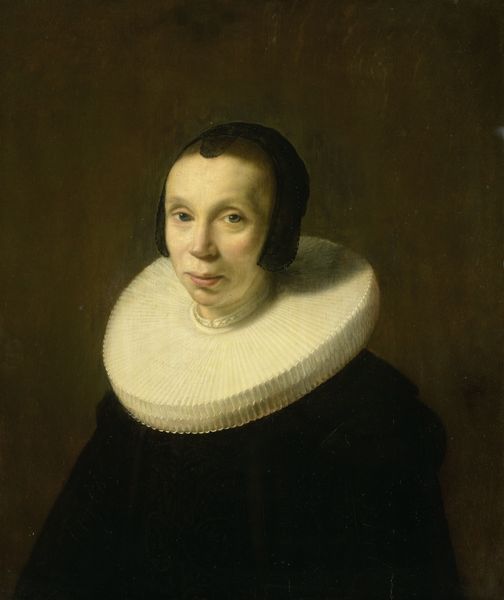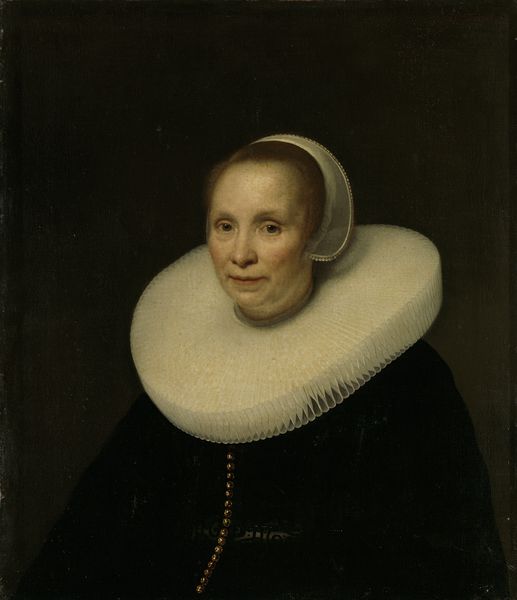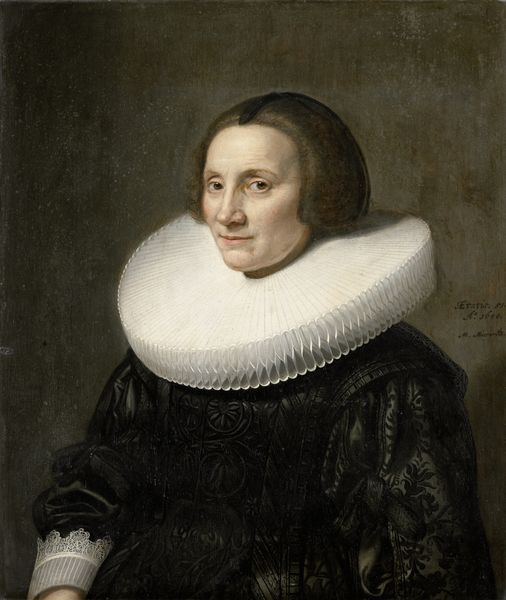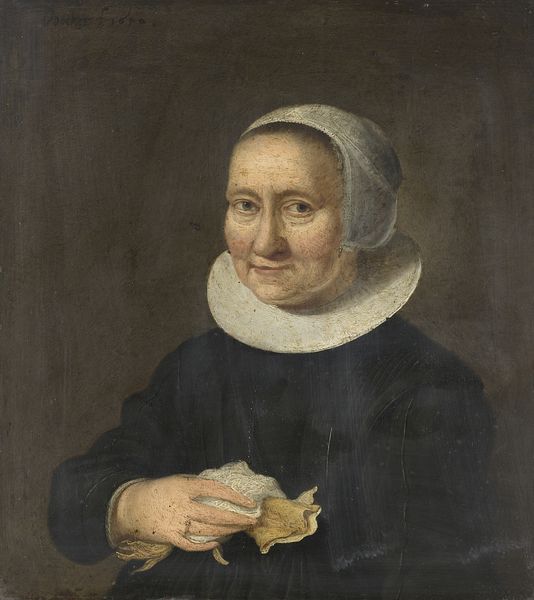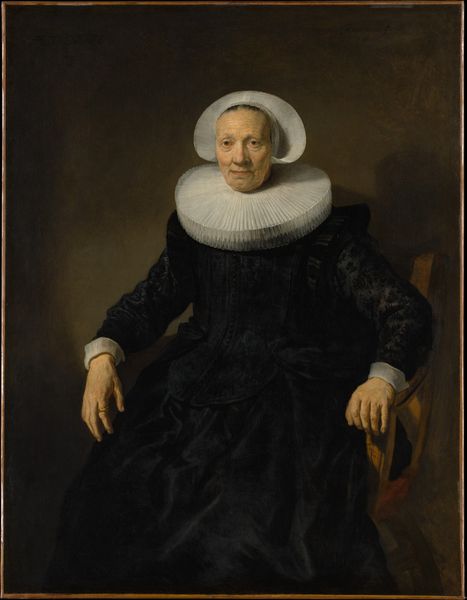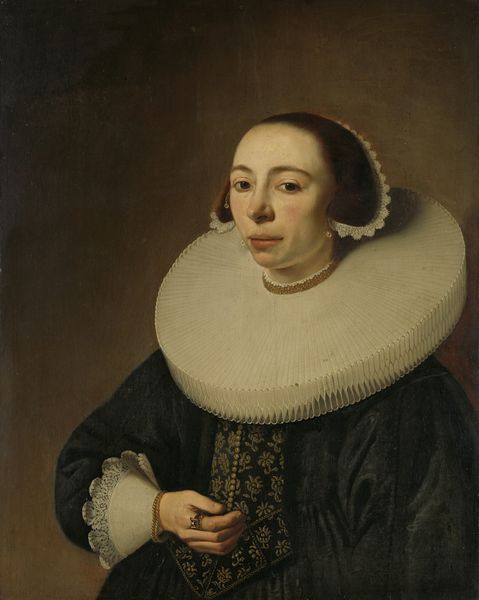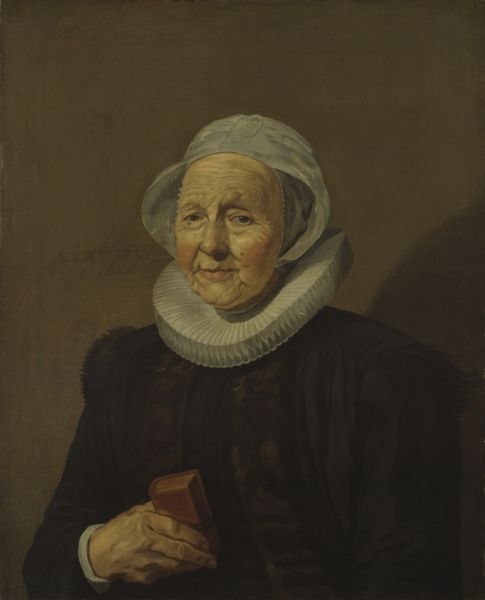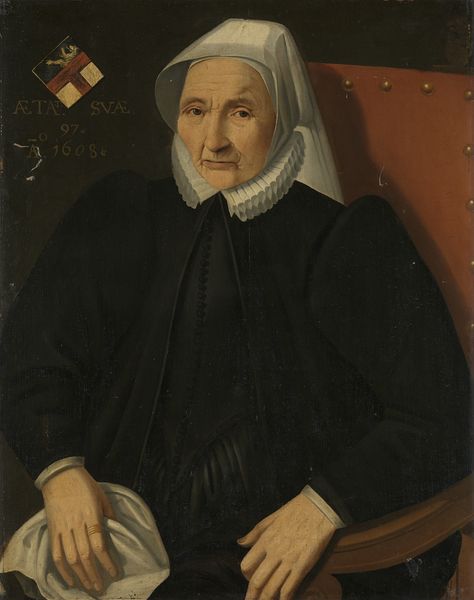
painting, oil-paint
#
portrait
#
baroque
#
portrait
#
painting
#
oil-paint
#
chiaroscuro
Dimensions: Oval, 26 3/4 x 19 3/4 in. (67.9 x 50.2 cm)
Copyright: Public Domain
Curator: Standing before us, we have Rembrandt van Rijn’s "Portrait of a Woman," created in 1633. This oil painting is an exquisite example of the Dutch master’s skill, currently housed here at The Met. Editor: It’s strikingly austere. The contrast between the tight white collar and the enveloping darkness creates a somber mood. There’s something about the composition that directs all focus directly onto her face. Curator: Absolutely, the high contrast contributes to the drama, typical of Baroque aesthetics. Beyond its formal elements, this portrait allows us to explore the intersection of wealth, status, and the role of women in 17th-century Dutch society. The subject, while unknown, exudes a certain reserved dignity. Editor: That starched collar almost acts as a visual barrier, doesn’t it? A signifier of the period’s strict social codes and the separation between the viewer and the subject's inner life? How does the museum contextualize the reception of paintings such as this in its time? Curator: Contemporary interpretations largely focused on moralizing notions. The painting operates in a nexus of gender roles, domesticity and piety, each emphasized by subtle visual cues. However, more recent analysis challenges simplistic readings. Some consider this artwork to represent the shifting socioeconomic status of women at the time, and the emergent presence of female intellect in public discourse. Editor: And thinking just of its visual language, the details in her face tell so much – tiny wrinkles, perhaps a hint of rosacea, human details so often smoothed over in portraiture even back then. She is not idealized; she's simply present. Curator: True, and consider the implications for a wealthy, female sitter in that era. One is compelled to think about art as cultural commentary. Editor: Yes, even without overt symbolism, the deliberate choices in presentation say much. Curator: Well, it encourages further discussion. Each brushstroke has potential for contextual consideration. Editor: Indeed, offering pathways into understanding both form and society, through that quiet gaze.
Comments
No comments
Be the first to comment and join the conversation on the ultimate creative platform.

